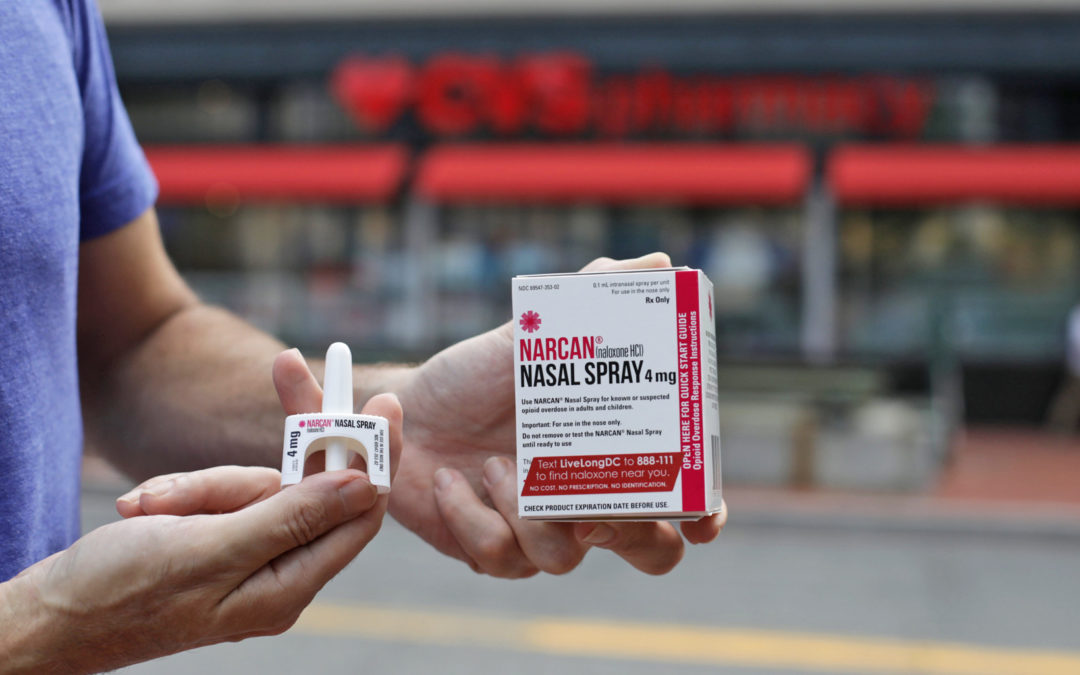Seconds can determine life versus death. Knowing what to do when someone has overdosed on opioids is vital.
What are opioids?
Opioids, sometimes called narcotics, are a type of drug. They include strong prescription pain relievers such as oxycodone, hydrocodone, fentanyl and tramadol. The illegal drug heroin is also an opioid.
Taking high doses of opioids can cause an overdose. Opioids affect the part of the brain that regulates breathing. Because the drug slows or stops breathing, an overdose can lead to death.
If you take an opioid, your family and friends must know how to respond to an overdose. An accidental overdose can happen to a person who take prescription or non-prescription opioids.
What does an overdose look like?
Here are some signs that someone is experiencing an overdose.
- Unconscious, unresponsive, hard to wake
- Slow, shallow breathing, difficulty breathing
- Choking, gurgling or snoring
- Blue/purple fingernails or lips
If you notice the above signs, check on their breathing and try to wake them up.
- Look for chest rising and falling.
- Put your ear near their mouth to listen and feel for breaths.
- Shout and shake them.
- Firmly tap them on their chest.
What do I do if I find someone experiencing an overdose?
If you think someone is having an opioid overdose, take the following steps.
- Call 9-1-1 immediately. Administer naloxone if it is available. Naloxone is a safe medication that can quickly stop an opioid overdose. Note: it is safe to use naloxone even if you are unsure the unresponsive person is experiencing an opioid overdose.
- Try to keep the person awake and breathing.
- Lay the person on their side to prevent choking.
- Stay with the person until emergency workers arrive.
Where do I get naloxone?
If you are currently taking opioids, ask your healthcare provider whether you need a prescription for naloxone. Naloxone is readily available at most pharmacies. Free nasal naloxone is also available to anyone in Tillamook County by calling 503-815-2401 or emailing via OURTillamook.org. Nasal naloxone is called Narcan®. It is easy to use since it is dispensed as a spray up the nose.
How can I prevent an overdose?
- Take your medicine exactly as prescribed by your healthcare provider. Do not take more medicine at once or take medicine more often than you are supposed to.
- Never mix pain medicine with alcohol, sleeping pills or illegal substances.
- Store medicine safely where children and pets can’t reach it. Consider using a medicine lockbox to keep out others who don’t need access.
- Dispose of unused medicine properly.
For more information about naloxone, Narcan®, drug disposal or opioid use disorder, please visit OURTillamook.org.
This project is supported by the Health Resources and Services Administration (HRSA) of the U.S. Department of Health and Human Services (HHS) as part of a financial assistance award totaling a million dollars with 100 percent funded by HRSA/HHS. The contents are those of the author(s). They do not necessarily represent the official views of, nor an endorsement by, HRSA/HHS or the U.S. government.
AUTHOR: Mareliza de Jesus, Project Coordinator at Adventist Health Tillamook
For more local health and wellness information, follow Tillamook County Wellness on Facebook, Instagram and Twitter.

